Applications for the 2015 ‘Biodiversity and Ecosystem Service Assessment’ training course are open until 14th November 2014. In February we hope to build on the success of the 2014 course and we have made some additions and improvements to the program based on the feedback we received from students. We are also lucky to have an international component in the form of Professor Stefano Lanzoni from the University of Padova.
Here’s what participants of last year’s pilot course thought of their week in Morecambe and how they felt it contributed to their career development:
 “It was great to meet people from Sediment Ecology Research Group where I will be studying later this year, and learn the fundamental details of saltmarsh ecosystems and sampling design. I really enjoyed sampling the surface sediment for primary productivity and using the gas flux chamber in the field, and I now hope to apply these techniques in my own research.” – Dandan Wang, China
“It was great to meet people from Sediment Ecology Research Group where I will be studying later this year, and learn the fundamental details of saltmarsh ecosystems and sampling design. I really enjoyed sampling the surface sediment for primary productivity and using the gas flux chamber in the field, and I now hope to apply these techniques in my own research.” – Dandan Wang, China
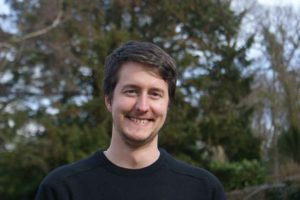 “Having been taught about various image analysis techniques, I now intend to use photogrammetry software to develop ‘Digital Elevation Models’ and employ ‘supervised pixel characterisation’ to quantify both vegetation patch cover and tidal channel networks in my own research project.” – Cai Ladd, Bangor University
“Having been taught about various image analysis techniques, I now intend to use photogrammetry software to develop ‘Digital Elevation Models’ and employ ‘supervised pixel characterisation’ to quantify both vegetation patch cover and tidal channel networks in my own research project.” – Cai Ladd, Bangor University
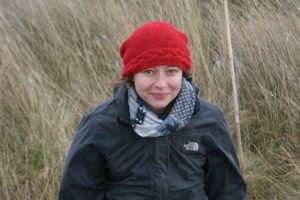 “I am hoping to use techniques to measure gas flux, most likely benthic chambers, in the future. My PhD is focussed on food webs, and I am hoping to correlate carbon flux with food web properties such as chain length and connectivity.” – Lydia Bach, Queen’s University Belfast
“I am hoping to use techniques to measure gas flux, most likely benthic chambers, in the future. My PhD is focussed on food webs, and I am hoping to correlate carbon flux with food web properties such as chain length and connectivity.” – Lydia Bach, Queen’s University Belfast
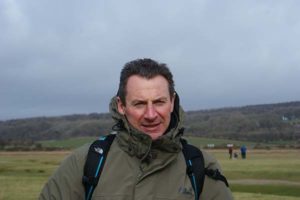 “I gained a clearer understanding of how I may use the ecosystem function measurements from the CBESS sampling campaigns to create robust and meaningful descriptors for recipients in choice survey assessment of non-market values. The course particularly heightened my research interest in the role that wading birds contribute to bioturbation and how this may be affected by changing abundance and diversity.” – Justin Granger, Queen’s University Belfast
“I gained a clearer understanding of how I may use the ecosystem function measurements from the CBESS sampling campaigns to create robust and meaningful descriptors for recipients in choice survey assessment of non-market values. The course particularly heightened my research interest in the role that wading birds contribute to bioturbation and how this may be affected by changing abundance and diversity.” – Justin Granger, Queen’s University Belfast
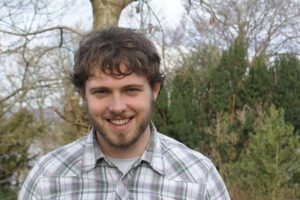 “Having recently commenced my PhD, I found the course extremely helpful – in particular the focus on how to fully prepare for your fieldwork logistically. I also found the information on the different ways in which to analyse the resultant data very useful.” – Donal Griffin, Queen’s University Belfast
“Having recently commenced my PhD, I found the course extremely helpful – in particular the focus on how to fully prepare for your fieldwork logistically. I also found the information on the different ways in which to analyse the resultant data very useful.” – Donal Griffin, Queen’s University Belfast
 “The field course was extremely useful and I intend to use several of the techniques demonstrated during my PhD (in which I am investigating contaminant uptake by benthic algae). I am using a variation of the lens tissue diatom collection technique, and I will use contact cores to collect data on chlorophyll, water content and sediment particle size in the top millimetres of sediment and NDVI to estimate microphytobenthos biomass.” – Amani Becker, University of Stirling
“The field course was extremely useful and I intend to use several of the techniques demonstrated during my PhD (in which I am investigating contaminant uptake by benthic algae). I am using a variation of the lens tissue diatom collection technique, and I will use contact cores to collect data on chlorophyll, water content and sediment particle size in the top millimetres of sediment and NDVI to estimate microphytobenthos biomass.” – Amani Becker, University of Stirling
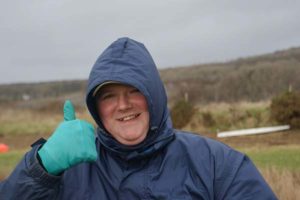 “The course was well worth the journey. I found it very useful, particularly the CSM which I have an interest in due to my current research on mass sediment movement. I found the field excursions very great and I now possess a degree of confidence when it comes to working on mudflats. The course gave me the opportunity to step back a bit from my niche and look at the coastal environment in a wider context. Particularly it helped me think about how my work fits with the wider coastal ecology.” – Christopher Sneddon, University of Stirling
“The course was well worth the journey. I found it very useful, particularly the CSM which I have an interest in due to my current research on mass sediment movement. I found the field excursions very great and I now possess a degree of confidence when it comes to working on mudflats. The course gave me the opportunity to step back a bit from my niche and look at the coastal environment in a wider context. Particularly it helped me think about how my work fits with the wider coastal ecology.” – Christopher Sneddon, University of Stirling
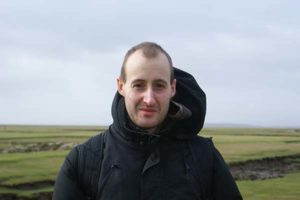 “The course was invaluable in expanding my knowledge in the area of coastal biodiversity and ecological function. Specifically, I hope to use many of the field techniques leaned (CSM, Gas Flux and GIS) to conduct small scale experiments within my current case studies. In addition with great thanks to in house expertise I now have a greater understanding of the methods of; Community Bioturbation Potential (BPc), Biological Traits Analysis and Bootstrapping statistics. I will now aim to use these approaches to quantify the linkages between biodiversity stocks, multiple ecosystem functions and flows of key ecosystem services at a landscape scale in complex but ecologically and socio-economically critical, coastal landscapes.” – Stephen Watson, University of St Andrews
“The course was invaluable in expanding my knowledge in the area of coastal biodiversity and ecological function. Specifically, I hope to use many of the field techniques leaned (CSM, Gas Flux and GIS) to conduct small scale experiments within my current case studies. In addition with great thanks to in house expertise I now have a greater understanding of the methods of; Community Bioturbation Potential (BPc), Biological Traits Analysis and Bootstrapping statistics. I will now aim to use these approaches to quantify the linkages between biodiversity stocks, multiple ecosystem functions and flows of key ecosystem services at a landscape scale in complex but ecologically and socio-economically critical, coastal landscapes.” – Stephen Watson, University of St Andrews
 “The course has enhanced my understanding of coastal biodiversity and ecosystem functioning and the diverse array of techniques used to measure this. In my research I will use saltmarsh vegetation sampling techniques, alongside analysis of sediment size, geochemistry and pollen to interpret ecosystem resilience to storm events.” – Tom Holmes, University of York
“The course has enhanced my understanding of coastal biodiversity and ecosystem functioning and the diverse array of techniques used to measure this. In my research I will use saltmarsh vegetation sampling techniques, alongside analysis of sediment size, geochemistry and pollen to interpret ecosystem resilience to storm events.” – Tom Holmes, University of York
 “While perhaps not during my PhD, odds are that I will end up using knowledge taken from this course, especially that related to study design, in future ecological studies, as a lot of it may be applied to ecosystems beyond mudflats and salt marshes.” – Victor Blanco, University of Edinburgh
“While perhaps not during my PhD, odds are that I will end up using knowledge taken from this course, especially that related to study design, in future ecological studies, as a lot of it may be applied to ecosystems beyond mudflats and salt marshes.” – Victor Blanco, University of Edinburgh
